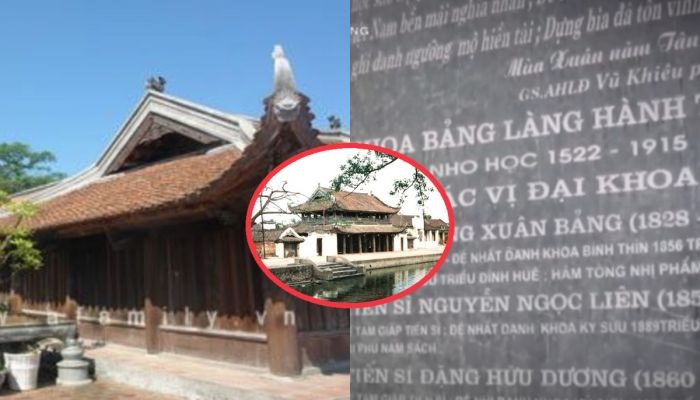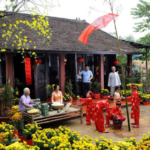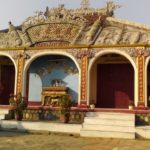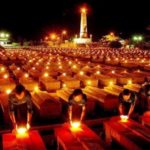Located in the heart of Xuan Truong district, Nam Dinh province, Xuan Hong Village is a long-standing cultural heritage, famous for its rich tradition of filial piety and humanitarian spirit.
Based on the document “Xuan Hong village chronicles”, it is known that Xuan Hong, formerly known as “Cung Trang Hanh”, was formed around the 16th century. In 1823, King Minh Mang decided to change the village’s name to Xuan Hong, meaning “a place of good deeds”, and bestowed upon the village the four characters “Phong Kha My Tuc”.

The geographical landscape of Xuan Hong is depicted by two branches of the Con River, each about seven meters wide, embracing the village like two gentle silk ribbons. From above, Xuan Hong appears as the image of a giant carp, with its head facing south and its tail curling towards the north, as if preparing to jump into the sea.
These two branches of the river create natural boundaries, dividing Xuan Hong from the surrounding areas, making the village stand out on the map with the shape of a “ly ngu” – a carp in the legend.
This unique topography has created the distinctiveness of the ancient village. The bridges around the village are built at positions corresponding to the parts of the fish, and at the fish’s head, there is a clear water well called “Fish Eye Well”. At the center of the fish’s head is a place of worship with a small shrine, and not far from there is the Thi market, a bustling place that reflects the unique culture of the people in the North Delta.
Xuan Hong is also known for its reputation in education, with a glorious history of Confucian scholars. The village has produced 7 people who passed the highest level examination, including 3 doctors and 4 assistant doctors, along with 97 graduates and 315 talented individuals. Xuan Hong is also proud of having 4 Ministers, 4 Governors, 4 Grand Governors, and 23 court officials, along with 69 district administrators and prefects.

Dr. Dang Xuan Bang, the highest-ranking scholar in the history of the village, is a testament to Xuan Hong’s outstanding academic tradition. He passed the doctoral examination in 1856 and is known for establishing a school from 1878 to the early 20th century. He also founded the Hy Long library, which preserves the largest collection of Chinese books in Northern Vietnam at that time.
Xuan Hong is also a place with many families with a long-standing tradition of education, where both parents and children have achieved significant accomplishments in education. As an example, the family of Mr. Dang Vu Kiem, with three children who graduated with Bachelor’s degrees and two children who graduated as talented individuals.
Today, Xuan Hong continues to be a symbol of filial piety, with the highest number of people passing examinations in Nam Dinh. According to statistics, there are up to 88 people who have been awarded the titles of Professor, Doctor, Assistant Doctor, and over 600 people with Bachelor’s degrees, contributing to the reputation of this region around the world.
In Hanh Thien Village, studying is not only a tradition but also considered a profession. A famous folk song reflects this: “Under the moonlight, two rows of mats are spread out / Brothers read books, sisters spin yarn.”

Every year in August, Hanh Thien Village organizes the commendation ceremony of the Education Promotion Association, encouraging and honoring students who have achieved excellent results at the provincial, national, and international levels. This event contributes to fostering the spirit of learning in the community. In recent years, the village has witnessed the appearance of dozens of new students from prestigious universities. This demonstrates that the tradition of “the profession of learning” is still maintained and strongly developed in Hanh Thien.
Explore 12 Amazing Destinations for Biking Trips
Unlock Vietnam in a brand new way with an exciting biking tour! Discover the stunning beauty of the country with Dien May XANH’s top 12 must-see destinations. From sweeping plains to clear blue beaches and mountainous vistas – experience all the sights with your own personal cycling tour. Find your ideal route and set out for an adventure today!



































